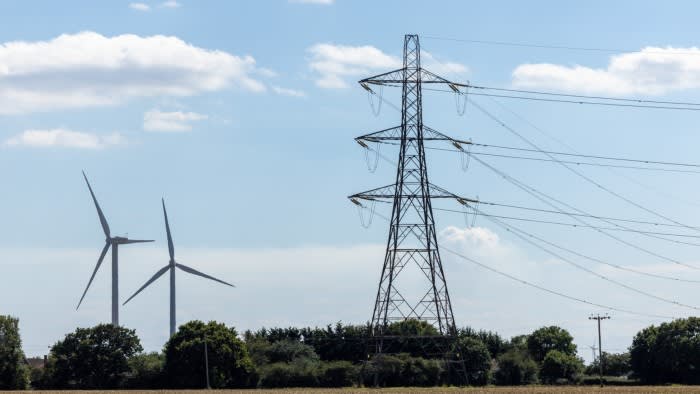Stay informed with free updates
Simply sign up to the UK energy myFT Digest — delivered directly to your inbox.
Proposals to split Britain’s electricity market so that prices differ by region risk pushing up manufacturers’ costs and deterring investment, some of the UK’s largest trade groups have warned the government.
UK Steel, Make UK, RenewableUK and the Global Infrastructure Investor Association have written to ministers saying they are worried that the proposals, developed by the Conservative government, could “increase the risks of de-industrialisation”.
“We are clear that splitting Great Britain into several regional price zones would undermine investment in low-carbon energy and risks penalising the UK’s energy-intensive industries with higher electricity costs,” they said in the letter sent on Friday and seen by the Financial Times.
The message comes at a sensitive time for the new Labour government, which is trying to demonstrate the UK’s attractiveness to investors ahead of its global investment summit on October 14. The recipients included energy secretary Ed Miliband and Jonathan Reynolds, business secretary.
The proposed reforms are part of sweeping potential changes to the electricity market first advanced in 2022, to adapt to the shift to renewable sources of generation such as intermittent wind and solar power. Labour, which is making a big push on renewable energy, has yet to outline its position on them.
Currently Britain has a single national wholesale electricity price. The proposals include an option to split the market so that wholesale prices differ by region, depending on supply and demand.
Proponents argue this could make the market more efficient and keep system costs down by encouraging consumers to use electricity when it is abundant nearby, rather than letting it go to waste, as frequently happens.
Guy Newey, chief executive of Energy Systems Catapult, the innovation centre, said the market needed “urgent reform”, adding: “Zonal pricing is already common in a huge number of international markets and has driven down costs for consumers.”
Ultimately, supporters argue the move could encourage industry to shift to areas with abundant renewable supply, such as parts of Scotland, while developers could expand in areas less well supplied with renewable electricity, as they could get higher prices.
However the trade groups are concerned that the proposals would risk higher prices for industries that consume large quantities of electricity, such as steel, glass and ceramics. They would also add to the risks faced by renewable developers, they said.
“A miles-wide steel plant simply cannot up and leave to get access to lower power prices elsewhere,” added Frank Aaskov, director of energy and climate change policy at UK Steel, in comments separate to the letter.
“This is before we consider the billions invested in operations, let alone the workers who could get left behind.”
Relatively high electricity costs have long been a source of complaint for industry, which is moving away from fossil fuels. Both Tata Steel and British Steel are closing coal-fired blast furnaces in the UK and moving to electric arc furnaces.
Jon Phillips, chief executive of the Global Infrastructure Investor Association, noted that global investors “seek long-term, low-risk investments that generate steady returns”.
He added: “The introduction of zonal pricing . . . risks undermining the government’s ambitions to attract more international investment into the UK. It’s important that energy policy provides the long-term stability that investors seek.”
A UK government spokesperson said it was reviewing responses to the consultation on the issue and would “ensure that any reform options taken forward focus on protecting bill payers and encouraging investment”.
“Our new industrial strategy will deliver long-term, sustainable growth right across the UK by supporting our industries and driving private investment into our economy,” they added.
https://www.ft.com/content/d752093e-0ebc-4797-a934-e680b5619741


